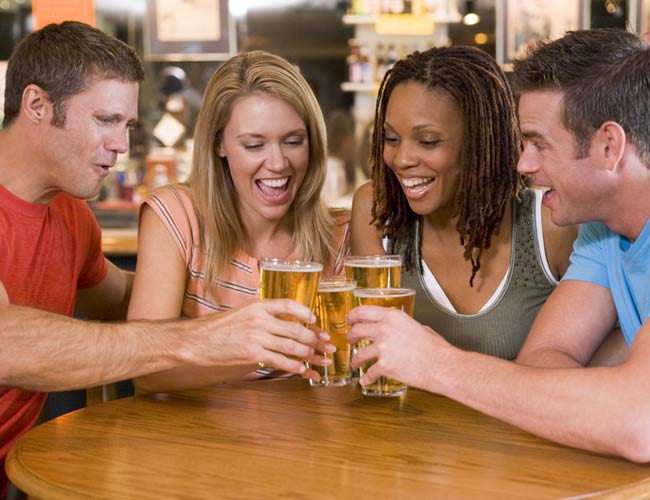People Really Do Look Better When You Drink

For the first time, scientists have proven that "beer goggles" are real — other people really do look more attractive to us if we have been drinking.
Surprisingly, the beer goggles effect was not limited to just the opposite sex among the ostensibly straight volunteers recruited for the study — they also rated people from their own sex as more attractive.
Scientists in England gave 84 heterosexual college students chilled lime-flavored drinks that were either non-alcoholic or given a dose of vodka equivalent in alcohol to a large glass of wine or a pint-and-a-half of beer.
After 15 minutes, the volunteers were shown photos of 40 other college students from both sexes. Both men and women who drank booze found these faces more attractive, "a roughly 10 percent increase in ratings of attractiveness," said researcher Marcus Munafo, an experimental psychologist at the University of Bristol in England.
The researchers also asked volunteers to rate their mood, "and there were no differences on those measures in the alcohol group compared to the no-alcohol group," Munafo added. "This suggests that the effect we observed wasn't due to a general change in mood."
It did not escape Munafo that the results are rather obvious.
"Everyone knows about beer goggles," Munafo said. "But some of our results suggest that there's more going on than we might have thought."
Get the world’s most fascinating discoveries delivered straight to your inbox.
The discovery that the effect is not specific to the opposite sex was surprising. One possibility is that alcohol generally makes us see things as more attractive, but when this occurs in social situations, such as at a bar, "this might become targeted at opposite-sex faces," Munafo said. By repeating the experiment with video clips shot at bars, the scientists hope to recreate those social cues and see what happens.
"The main question is whether these effects are specific to faces, or whether we would rate anything as more attractive after a drink," Munafo said.
Future research could expose people who have been drinking to landscapes or the faces of puppies and other animals, "to see if alcohol has a more general effect on perceiving beauty in the environment."
Low dose
"It's also surprising to see this effect is happening at lower doses than you might think," Munafo said. "We're trying to build up a more complete picture of what happens when people go out for a drink, and we're interested in certain behaviors that are more common after drinking, such as unsafe sex, or violence. If this effect is happening at lower doses than expected, it might be helpful for people who are predisposed to such behaviors to anticipate those situations and prevent them."
The scientists would also want to vary the levels of alcohol that volunteers receive, "but there are practical and ethical constraints around how much alcohol we can give people in the lab!" Munafo told LiveScience.
Munafo and his colleagues detailed their findings online August 6 in the journal Alcohol and Alcoholism.
- Top 10 Aphrodisiacs
- The Sex Quiz: What Do You Know?



